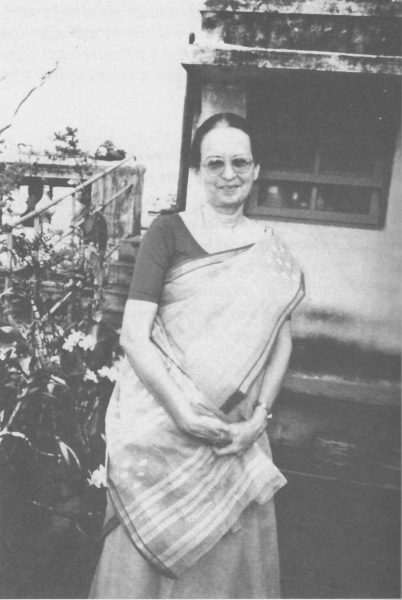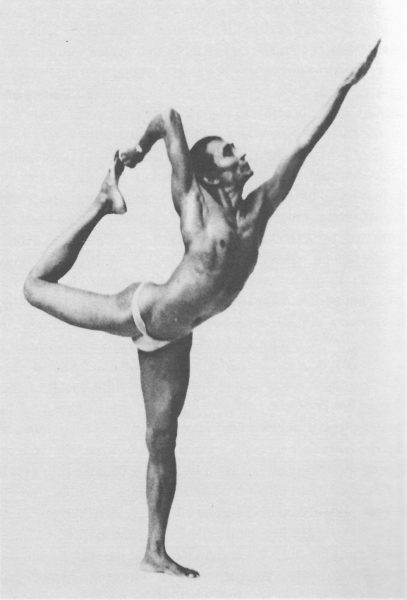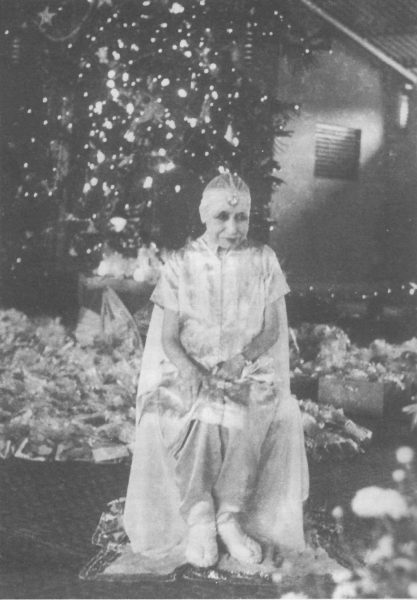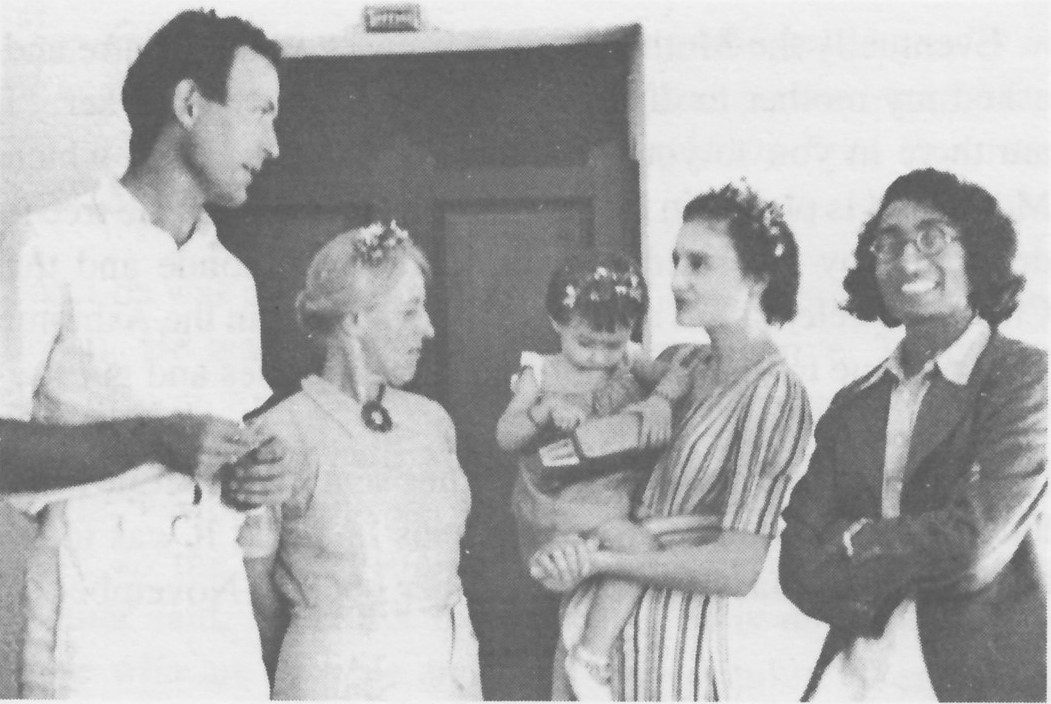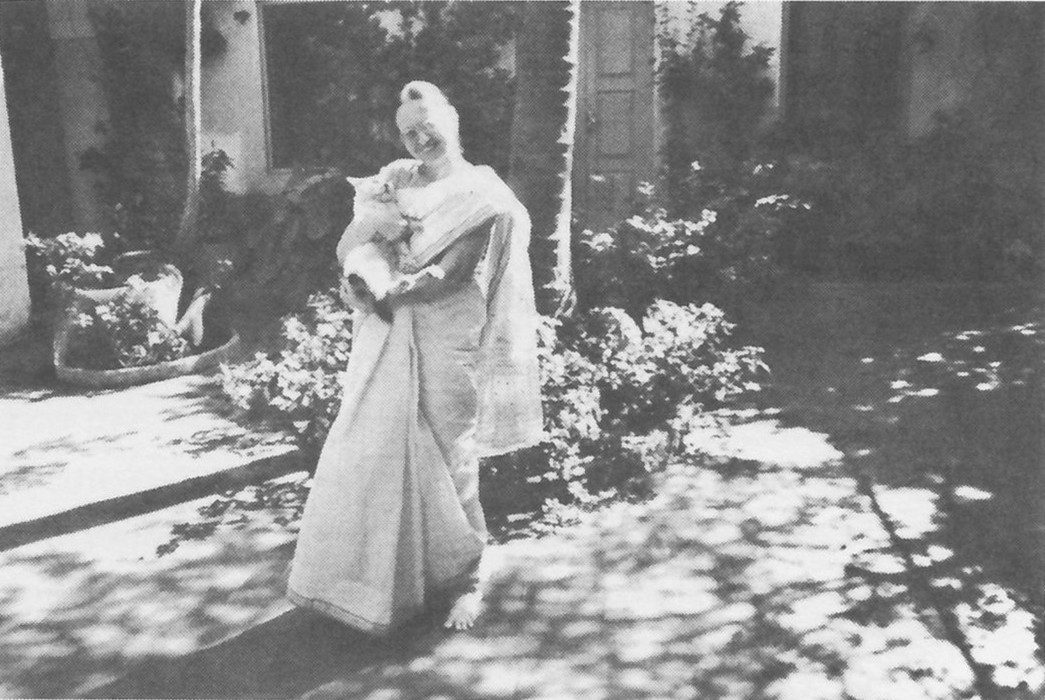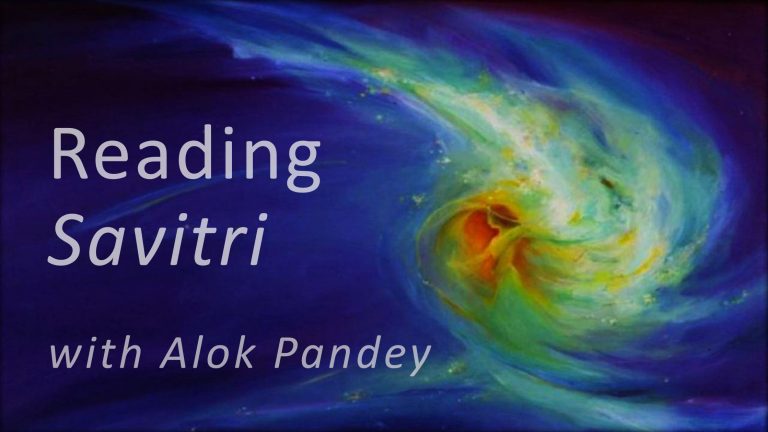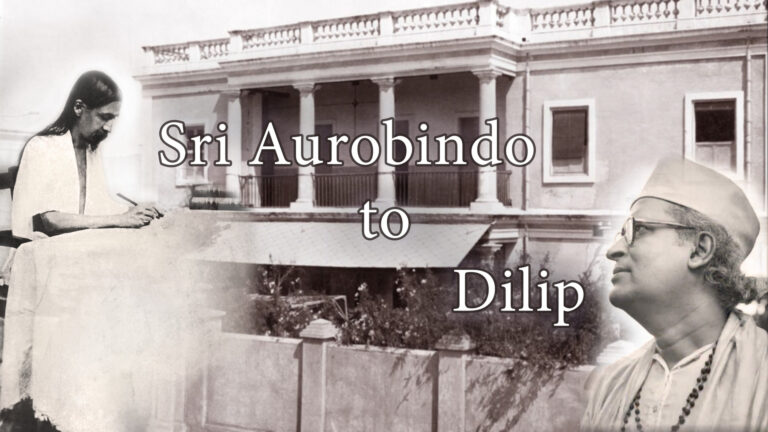Gauri Pinto
(Teacher in the Sri Aurobindo International Centre of Education)
My return visit to “Fenêtres” on Rue St. Gilles in Pondicherry, home of the Pinto family, found me again being greeted at the door by the furry likes of “Starry”, “Jackie-Boy”, “Cutie”, “Tina”, “Brownie”, “Radha” and others of Gauri Pinto’s numerous cats and dogs that she nurtures back to health so assiduously after rescuing them from the streets of Pondicherry.
Our initial conversation centered around the rather violent cyclone that had just touched down in Pondicherry in November 2000 just a few days prior to my arrival on December 4”’. My first rickshaw ride through the Government Park was startling; it resembled a war zone. All the leaves on the trees appeared to have been burned and most trees were barren and empty of greenery rendering the heat from the scorching sun all the more intense. Limbs were down everywhere and trees had toppled into the walls surrounding the governor’s mansion as well as other buildings and houses.
Leaves, limbs and branches were burning on the corners of the streets filling the air with a billowing, acrid, choking cloud of smoke. Gauri said that the winds were so powerful that all the moisture was drawn from the leaves. The Ashram lost almost all of its “Transformation” trees. The winds, reaching up to 100mph, churned up the waves from the Bay of Bengal with such force that stones were sent hurling from the retaining wall clear across the beach boulevard as though a battle had been launched. That road had to be closed off to traffic and pedestrians for more than eight hours. It was the worst storm to hit the area in thirty years. Ashramites spoke of the Kali Yuga in connection with the cyclone.
As we began our interview Gauri served my favorite drink; “Power Syrup”, made in the Ashram. It is a blend of the essences of hibiscus flowers, rose petals and lemon juice diluted in water with some sugar added. The drink was introduced to me in 1968 by the Pinto family. It is a most refreshing, cooling drink in the tropics.
Gauri told me that she was born Judy Ann Pinto on 16th November 1937 to Mona and Laurence (Udar) Pinto. They had just had their first darshan of the Mother and Sri Aurobindo a few months earlier. The Mother had requested that the baby should be born in the hospital in Bangalore where Udar’s aunt was a doctor. There were no good hospitals in Pondicherry at that time. After six weeks time in Bangalore she was brought home to Pondicherry but was a fragile child and prone to sickness in her early years. She said she was surrounded by so many Tamil amahs from the beginning that she learned very early in her childhood how to speak the Tamil language fluently. There was much concern over the new baby’s health as she was not taking her food properly and was way underweight for her age. She did not sleep well during the night and naturally kept her parents awake and concerned. Doctors were consulted and Udar and Mona entered into correspondence with the Mother regarding the matter. When the baby was about two months old Udar wrote asking if he could bring her to the Mother. The Mother replied,” I do not find it prudent, still, to bring the child into the Ashram atmosphere. It is better to wait one year more.” This practice actually became a rule in the Ashram. Babies and infants were not allowed to go as they could very easily feel and absorb the power and could not support the force.
Gauri showed me a large envelope filled with correspondence that had been sent to the Mother seeking advice and help in connection with her eating problem. In many instances Sri Aurobindo would answer as the Mother was so busy organizing the Ashram. In answer to one letter Sri Aurobindo replied, “Have you tried Horlicks Malted Milk Powder?”! (Horlicks is a British product, popular in India at that time and to date.) In another letter Mona states that the doctor advised that she starve-feed the baby. This meant withdrawing the feedings until she became really hungry and on a settled schedule. Sri Aurobindo responded, “The Mother does not approve of starve-feeding the child.” (All of this correspondence was so very touching to me as here was the avatar, Sri Aurobindo, who brought down The Life Divine, Savitri and other profound words straight from The Source, giving out loving advice for a little baby who wouldn’t eat!) A. B. Purani, a close friend of the family, also became involved and offered his parental advice and wisdom on childcare. Eventually her eating habits became normalized and she gained the proper weight. Gauri told me that Ambu, the late Ashram hatha yoga teacher, (to whom the Mother addressed her letters “To My Faithful Baby”) was her “nanny”! “Ambu looked after me, gave me oil baths, fed me and took me for walks while my parents worked for the Mother”, Gauri said.
Ambu in Hatha Yoga pose, Ashram 1983
What was your earliest recollection of the Mother and Sri Aurobindo? What were you told about the Mother in early childhood?
When we used to go for the balcony darshans when I was still very small I would say “Big Mama is coming, Big Mama is coming”. I was brought up essentially with no religion. I was very close to nature and animals. When I thought of God I saw Sri Aurobindo’s image. Also, I did not think of the Mother as a human being. It wasn’t planned out for me that she would appear as a Goddess, but that’s how it was in actuality. The Mother told my mother that I was a very old soul. When we would go up to see Mother on Darshan days she was like a mother to all of us. She taught us children so much. We would sit down before her and she would pat us on the head. We would go to the Mother and have lunch with her. The queues were long waiting to see Sri Aurobindo. We would see him four times a year. I saw him up to the age of thirteen at which time he left his body in 1950. He was for me the personification of Compassion. There was always so much light around him. I always saw this light around him and a loving, compassionate smile on his face.
Once I was bitten on the face by a dog and had become very frightened of all dogs after that experience. My father’s aunt came to visit and felt it was not good for me to be so scared of dogs. Next visit she brought me a Dalmatian puppy. I was so scared of it that I jumped on the table to get away from it, but eventually I grew to love it. The Mother named the dog “Spotted Beauty”. When it was time for “Spotted Beauty” to be mated the Mother arranged for the dog to go to “visit” her friend, Madame Baron, the wife of the French governor of Pondicherry. They had a male Dalmatian so “Spotted Beauty” went to live in the governor’s mansion! She gave birth to a litter of seven pups. I took them to the Mother and she was so charmed by the dogs that she took all 7 into Sri Aurobindo’s room. He did not touch them but watched them run about. One pup, however, went and sat at Sri Aurobindo’s feet and stared up at him with a transfixed expression. Mother said, “That is the one Gauri should keep.” Mother named it “Beau”.
Did you have other children to play with? The Ashram school had not been established when you were of school age. Where did you go to school and what was it like for you?
When my father was sent to New Delhi by Sri Aurobindo in 1941 (from March to October) to work for the war effort, I was sent to a modern school there at the age of three years for a few months, My father told the Mother that he felt I needed some formal education. I had mostly only been around adults up to that point. When we came back to the Ashram from New Delhi, I was approaching four years of age. The Mother put me with an Englishwoman named Pavita. She was a very strict woman who used to go out and sweep the streets of Pondicherry! She had been the secretary to Paul Brunton.
[Paul Brunton was an occult journalist and author. He wrote A Search in Secret India. He wanted to interview the Mother and Sri Aurobindo and the Mother said, “If we see him he must not write anything about us.” From what I was told he did get to see them but never wrote anything about them. He did, however, travel among sadhus, visited Ramana Maharshi’s Ashram, wrote another book called Secret Egypt, then some other philosophical books.]
Pavita was the first teacher I remember and it was not a good experience. I remember her as being rather stern and strict. She wanted me to be a genius and pushed me too hard. It killed my creativity. She did not have bad will, she just did not know how to handle small children. In fact, she later became a good teacher in the Ashram school when it started on December 2, 1943. When the school opened I was in a classroom with other children and it was so good to finally be with other children. The Mother, herself, would often read stories to us during her Wednesday evening classes in the Playground. She would characterize each animal and character in such a charming, loving way.
However, one drawback for me when I began school was that I was held back in a class with smaller, younger children as I did not want Pavita to be my teacher any longer.
Could you further elaborate on why this was a drawback?
Well, I developed a bit of a complex being older and taller than the other children in my class and I didn’t try very hard.
When and how was your name changed from Judy Ann to Gauri?
Although I was very timid, I loved to dance and particularly loved Indian dancing. I used to go to the library and listen to music. Whenever I heard music I would begin to dance freely. I chose two people at the library to dance with me and I wore anklets with bells. I would change my name every day. One day I would be “Jasmine”, the next day “Lakshmi” and so on. My mother and I used to go to the Mother each night before the meditations. One by one we would stand before the Mother. I would lift Mother’s sari slightly so that I could see the anklets that she was wearing. I would tell the Mother my name for that day. I was around five or so then. I loved beautiful flowers and Mother kept tiny-sized “Psychological Perfection” flowers in a glass bowl next to her. The Mother taught me how to do math by putting the flowers into my hand, taking away one then adding two or three more. The Mother would look at my hands and say “Mains de poupée” (hands of a doll).
[Gauri is a tall, willowy woman with a very refined and delicate face and hands and feet.]
One day I asked Mother for a name. She said, “I will give you a name if you promise you won’t change it. I’ll think about a name for you.” Mother would determine the inner quality of a person and the meaning of the name she wanted to give that person, then she would ask Sri Aurobindo to give the appropriate name in Sanskrit.
Later on I went to the Mother with Ambu and after pranam Mother gave me the name Gauri (“The Fair One”). Mother said she did not mean fair in terms of my skin but rather she wanted the name to convey “inner fairness”, the quality of being fair. It was a very serious moment and Mother’s eyes were so powerful as she looked into me. Then she said “Gauri” with the “au” pronounced like the French “o”.
How did the tradition of celebrating Christinas develop in the Ashram?
The first Christmas we celebrated was in 1938 when I was just one year old. It took place in our house called “The Red House”. The guests were Nishtha (Margaret Woodrow Wilson), Ambu (our very close friend, the young hatha yoga teacher who looked after Nishtha) and Francois Sammer (one of the architects for Golconde). Nishtha made a big star to place on the top of the tree that year. Later, in 1943, when other children joined the Ashram, the Mother asked my mother to arrange the event for all the children. The Red House lawn was used and we arranged games, prizes and gifts for the children. Hats were made and everyone wore a paper hat. All were made by Golconde residents. Even special crowns were made for the Mother and Sri Aurobindo! Dyuman used to come out into the streets and blow a trumpet on Christmas day and a special hat was also made for him. When we moved to “Fenêtres” on Rue St. Gilles the celebration continued there and when the house got too small we shifted to the playground where the Mother came, herself, to distribute the gifts to all the children and grownups. Finally when the theatre was bought by the Ashram, the celebration was held there and the Mother came to give out presents and to admire the tree and all the decorations. The Mother gave importance to Christmas. She told us that the initial celebration had come from the ancient Chaldean tradition. [The Chaldeans were a people who lived in the region of south-western Asia (Mesopotamia) on the Euphrates River and among whom astrologers and magicians flourished.] The wise men of that time observed that the calendar days toward the end of the year were growing shorter and shorter (the winter solstice) and people became worried that they would be engulfed in darkness. Then they began to notice that around the end of the month the days had begun to grow longer and that there was a return of the light. Christ’s birth date ultimately became fixed to this time of year as a symbol of the “return of the light”.
Mother in the 1950s in the Ashram Theatre on Christmas day
First Christmas 1938 with Mr. Sammer,
Margaret Woodrow Wilson, Mona and Baby Gauri and Ambu
Eventually the Mother stopped coming to the theatre and asked my mother to distribute the gifts. She said to her, “I am there in you so you do it instead.” The chair on which Mother sat is placed in front of the tree each year. The tree is decorated by the residents and staff at Golconde and the Christmas celebration remains a joyous event in the Ashram. We continue to distribute gifts to all ashramites and guests.
[Mona Pinto told me that the Mother sent out the following letter to all ashramites for Christmas in 1972. It was to be her last Christmas before she left her body in November of 1973.
“Father Christmas,
I invoke you today. Answer our call. Come bearing all your marvellous gifts. You are the great dispenser of worldly possessions. You are the untiring friend who hears every request and grants it generously. Give each one the material object of his desires and as for me, give me enough, give me much, so that I may give largely to all.”
Mother Mira
Christmas 1972
To the gifts of gold, frankincense and myrrh, brought to the Christ-child by the Magi, the Mother gave the following meanings:
Gold — Wealth of the world and Supramental Knowledge.
Frankincense — Purification of the vital.
Myrrh — Immortalization of the body]
Gauri, who were your teachers in the upper grades in the Ashram school? What are your memories of those days and what can you explain of the Free Progress System?
Sunil-da was my botany teacher and he was absolutely wonderful. He was so innovative and imaginative. Tehmiben was also an excellent teacher. I learned many things from her. Mother once said to the teachers, “Why do you give exams?” Mother was very much against testing and homework so the Free Progress System was introduced, but Mother said, “It is not for everyone, it is only meant for those who are capable and have the discipline to study on their own and decide what it is that they want to do.” The Free Progress System has been a bit chaotic and has not always been properly implemented. It is still in the process of development after all these years. Most teachers develop their own methods of teaching from within and from their own inspirations.
Did you ever want to go outside the Ashram and experience the outside world or marry and have children?
I first went outside the Ashram in 1968, with my mother, to visit relatives in London. The Mother said that going outside the Ashram would “enlarge my consciousness” and it has. I travelled again to London in 1975, 1986 and 1990, but the Ashram is my home and the Ashram life is my way of life so considering the worldly life and marriage was never an option for me.
You have been a teacher in the Ashram school for forty-five years. Could you share some details of that experience?
Becoming a drawing and English teacher was a turning point in my life. It helped to rid me of my timidity and helped me to gain confidence in myself. It is difficult to be a teacher in the Ashram. One must always be in control of one’s vital impulses (temper, emotions, etc.); one must be self-observing and act in a yogic manner at all times. It is necessary to remain aware that the work is being done for the Mother and that one isn’t there just to teach subjects, but also to help awaken the child’s psychic being and to awaken their senses to inner and outer beauty. All these years I have taught English grammar, reading, literature, creative writing, comprehensive poetry and drawing to students from eleven years up to fifteen years of age. The Mother strongly encouraged developing the child’s artistic side and appreciation of beauty.
How is the school different today? What changes do you see?
It is actually better today on the whole. People were more conservative and a bit dull in the old days. Now most of the teachers are former students who grew up here and have had more experience and are more interesting teachers.
What significant changes do you see in the Ashram?
Well, specifically. Mother put so much emphasis on beauty; beauty in buildings and the crafting of things. One often wonders, now, if that is still the aim. Mother’s guidance is so much missed in the area of aesthetics.
Would you speak about the inspirations you received from Mother’s talks in the playground or any stories of Mother that you would like to share?
The Mother inspired us all to strive to be better human beings. Every Wednesday, during her talks in the playground, she would give us a boost and encourage us to rise above ourselves. As teenagers we would often become easily upset and sensitive to injustices. Mother would look into our eyes and all the pain would disappear. We learned so many lessons from Mother. She taught us how to be grateful. She would receive and accept all the little gifts we made for her with so much love and gratitude, even if they weren’t made very well, and would show us, by her reactions, how to properly receive gifts. Ambu used to tell a beautiful “gratitude” story about the Mother. Some young Bengali devotees were travelling by train from Calcutta to Pondicherry to see the Mother. Also travelling on the train in their compartment was a simple village man. When they spoke of the Mother in his presence the man was very moved. He asked them to bring an offering of one rupee from him to be given to the Mother. When they went to the Mother and told her the story and gave her the rupee she said with great seriousness, “How can I ever repay this man?” Once someone sent her a small sum of money along with a note saying, “Buy yourself a mango”! Although the Mother was not particularly fond of mangoes she sent for one and ate some bites of it to show her gratitude. Mother taught us to appreciate beauty in all its forms; the reading of Savitri, poetry, literature, music and art. She was such a model for all us children. She gave importance to everything. She taught us also just how important it is to take care of material objects and to treat them with respect. I used to stand before the Mother and marvel, wonder-struck, at her own beauty.
Once she sent me a birthday card that read:
“Avec mes bénédictions pour développer et faire fleurir son culte, pour la beauté dans tous les domaines. Dans la Lumiere et la Joie.” (With my blessings for the development, flowering and cultivation of beauty in all its domains. With Light and Joy.)
In teaching us the four aspects of the Divine Mother, the Mother said, “There is another aspect… love!” She said this emanation had already been born on earth. She did not give a name but left it to us to find out. Of course we all thought it was her. Her love brought everyone together here. Some personal examples for me of her love took place once during a performance of “Swan Lake”, a play in the Ashram school. I fainted backstage and Mother came and took my hand and walked me up and down the area and hummed the most beautiful, soft, soothing melody to me. It brought me around and then I was fine. Another time she came to our house when I had typhoid fever. Dark forms had begun to envelop me. The Mother soothed my head and soon I recovered and there were no more nightmares.
Gauri with one of her cats at “Fenetres”, Dec. 2000
What would you say that living in the Ashram has provided for you that you could not have received in the outside world? In closing, can you assess your sixty-three years of life here in the atmosphere of the Ashram?
Definitely the environment of the Ashram is significant. The feeling of belonging, being loved by the Mother, guided by her and living by her example has meant a lot. As stated earlier, she constantly encouraged us to reach higher and higher in everything we did. She took the time and gave of herself to everyone. All life for us here in the Ashram revolved around the Mother. To grow in her presence was the gift. The aim was not money, nor wealth, but to grow inwardly was the constant focus. I am filled with tremendous gratitude for this wonderful experience of being here at a time when the Lord and the Divine Mother were on the earth. It took me some years to absorb and assimilate all that she had taught and I am so grateful for the grace that her life here brought to all of us.

